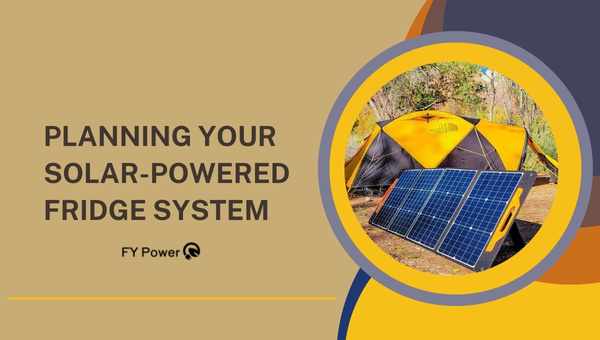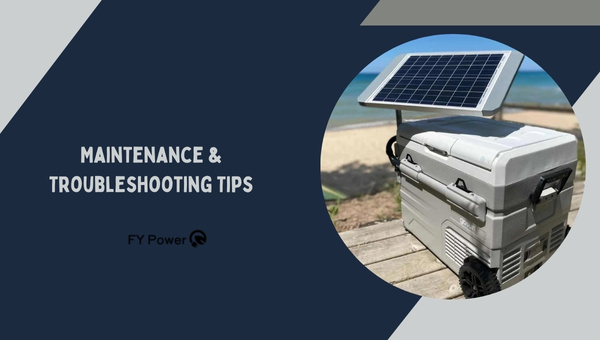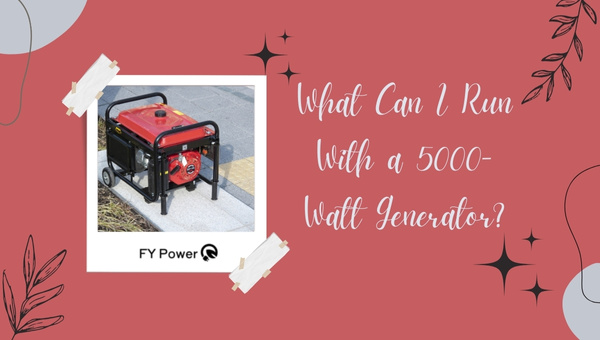Imagine journeying through the off-beaten path, knowing that behind your all-terrain vehicle sips a powered cooling haven – your fridge. It’s not just any cooler; it’s a solar-powered 12V fridge.
Isn’t that amazing? To be on track with this sustainable transition and reduce your heavy reliance on fossil fuels, read my guide below.
Equipping yourself with seamless knowledge of solar power a 12V fridge can be your golden ticket to frosty beverages whenever you’re outdoors or during those periodic blackouts at home.
Transform any conventional 12V refrigerator into an energy-efficient appliance using the energy you harness directly from the sun. With this approach, say goodbye to perennial electricity costs and gain more independence from grid power.
Here’s What You’ll Uncover:
- Comprehensive DIY solar setup guides
- Calculations for optimal solar panel system requirements
- Tips on selecting quality components for maximum output
- Insightful tips for maintenance and common troubleshooting
Planning Your Solar-Powered Fridge System
When planning your solar-powered fridge system, there are a few key factors to consider. First, determine the size and capacity of the fridge based on your needs. Next, assess the location where the solar panels will be installed, ensuring adequate sunlight exposure.

It’s crucial to calculate the power consumption of the fridge to determine the number of solar panels required. Finally, select a high-quality solar panel and battery system that can efficiently store and convert solar energy for uninterrupted fridge operation.
Assessing Your Refrigeration Needs
When I think about keeping food cool, it’s magic! But the real-world keys to making that magic? Know my fridge and know my sun. Are you putting the two together? That’s where you find out how much sunshine you need to keep your snacks and sodas chilled.
Let me break this down simply: First, look at your fridge. Did you get a big one or a little one? Check that energy label! It tells how much power it sucks up in a day. Next up, sun hours – not just any sunlight; I’m talking strong sun hours when it can juice up those solar panels well.
So here’s the trick – I add up all the energy my fridge needs over time and match that with the power I can get from my solar setup. Have to make sure there’s enough juice for cloudy days too, maybe throw in an extra panel just for safe measure.
Components You Will Need
Now let’s talk gear – what do I need to turn sunshine into cold?
Here’s my list:
- Solar Panels: No-brainer, right? These are my sunlight catchers.
- Charge Controller: Think of this as the brain that keeps everything smooth between panels and the battery.
- Battery: Where all that sunny goodness gets stored for later.
- Inverter: This takes battery power and flips it so my fridge can use it.
- Cables & Wires: These are like roads; they carry all the electrons where they have to go.
- Mounting Gear: How I’m going to stick those panels up there in the sky?
Remember though, every setup is different! Things like how long you’re off-grid or what your budget is might mean tweaking this lineup.
Also Read: LiFePO4 Batteries: Solar Panel Charging Simplified
Step-by-step Guide to Set-Up Solar Power a 12V Fridge
Setting up a device or software can be overwhelming, but with a step-by-step guide, it becomes easier. Begin by gathering all necessary materials and ensuring compatibility.
Follow instructions carefully, including the specific sequence of actions. Take breaks if needed to avoid mistakes due to fatigue. Finally, test the setup to ensure functionality and troubleshoot if necessary.
Step 1: Understanding the Wiring Diagrams and Basics
Do you want to wire without fires? Get these things straight:
- Every piece connects with cables or wires. Follow diagrams closely – they’re like treasure maps to energy land!
- Fuse them! Fuses protect gear from getting fried if something goes wonky.
- Match ratings on equipment with fuse sizes — no guessing!
Safety first always because nobody wants a barbecue where their kitchen used to be.
Step 2: Assembling Parts – Charge Controller & Battery Connection
Solar Power a 12V Fridge right starts here:
- Do you have your charge controller? Neat! Hook her up to your battery first—positive to positive (red), negative to negative (black).
- Now secure those connections tight so no wiggles cut off power unexpectedly.
Think love connection but more… electric!
Step 3: Harnessing Sunlight – Solar Panel to Charge Controller Connection
Shining light on panel hook-ups now:
- Panels catch rays first so line them up facing Mr. Sunshine directly.
- Cables again—connect them from panels back down into the charge controller using positives and negatives rightly tagged.
- Decide whether wiring them in ‘series’ or ‘parallel’ fits best based on your charge controller model.
Like Christmas lights brightening only if strung correctly!
Step 4: The Big Chill – Getting Your Fridge Running Off Your System
Finally hitting home stretch:
- Carefully connect the inverter output right to the fridge power input—make sure voltage deals are compatible!
- Fire everything up then wait eagerly as temps go down within cooler walls—it’s chill time!
- If hubbub happens like bleeps or no cold air—trouble spots might need eyeballing but stay calm; following through with troubleshooting steps given by equipment manuals usually helps out quickly.
Also Read: DIY Solar Wine Bottle Lights: Create Eco-Chic Decor!
Optimizing Your Setup
Optimizing your setup is essential for maximizing efficiency and productivity. Evaluate your workspace, ensuring it is organized, clutter-free, and ergonomically designed. Position your equipment and peripherals in a way that minimizes strain and promotes good posture.
Consider using productivity tools and software to streamline tasks and manage time effectively. Regularly assess and adjust your setup, as minor improvements can have a significant impact on your overall performance.
Calculating Panel Needs – How Many Do You Require?
When I think about how to solar power a 12V fridge, the first thing that comes to mind is the number of solar panels I’ll need. This isn’t just a guessing game. It depends on how much power my fridge uses each day.
To work it out, here’s what I do:
- Find out the fridge’s daily consumption: This is measured in watt-hours per day. If it’s not listed, I can measure it with an energy usage monitor.
- Consider sunlight hours: I check how many hours of good sunlight I get in my area on average. This can vary depending on where I live.
- Do some simple math: Now, say my 12V fridge needs 600 watt-hours per day and my location gets about 5 hours of strong sunlight daily. The solar panel must generate at least 120 watts an hour during those sunlight hours (600÷5=120).
- Add a buffer: Things aren’t always perfect, so I add about 25% more to cover energy loss and less sunny days.
So for this example, 120 watts plus the buffer means around a 150-watt panel would be necessary.
Picking the Perfect Battery Size
Choosing the right battery is like finding the best partner for my fridge—it has to be reliable and sturdy.
Lead Acid Batteries:
- Usually cheaper
- Tried and tested technology
- Heavier and bulkier
- Need regular maintenance
Lithium Batteries:
- More expensive but lasts longer
- Lighter and more efficient
- Virtually maintenance-free
I have to match the battery capacity—measured in amp-hours—with how much power my setup will need between charges (including that extra buffer).
Selecting Appropriate Charge Controller Size
The charge controller keeps my system safe by regulating electrical flow from panels to the battery and then to my fridge.
How do I choose one? Well,
- Know the maximum current: This comes from adding up all current ratings of connected solar panels.
- Sort by voltage: Make sure it matches or exceeds system voltage levels—usually either 12V or 24V.
Maintenance & Troubleshooting Tips
Remember to troubleshoot issues promptly and effectively. If you encounter technical difficulties, start by restarting your device, as this can often resolve common problems. Check for software updates and ensure all programs and drivers are up to date.

If the issue persists, try isolating the problem by disconnecting and reconnecting devices or running diagnostic tests.
Consider seeking technical support if necessary, as professionals can provide expert guidance. Regular maintenance and troubleshooting will help you maintain a productive and efficient workspace.
Maintaining Peak Performance
To make sure everything runs smoothly over time:
- Keep those panels clean! Dirt blocks light.
- Check connections regularly for any sign of wear or corrosion.
- Every now and then, review all electrical components—they should not be hot to touch; if they are, check for issues.
- Monitor battery health; don’t let them get too low or overcharged.
Simple checks stop small problems from becoming big ones!
Solutions For Common Hitches
Even with care, sometimes things go wrong:
If your fridge isn’t cooling:
1st – Check if there’s power at all; maybe a fuse blew?
2nd – Look over your connections; could there be something loose?
3rd – See if direct sunlight’s hitting your charge controller—it might overheat!
FAQs
Can I use my existing home refrigerator with this system?
You probably can’t use a standard home fridge with this solar system. Home fridges usually need more power than a 12V fridge designed for solar setups.
How do cloudy days affect my off-grid refrigerator’s efficiency?
Cloudy days mean less sun, which can lower the power your solar panels make. Your fridge may not stay as cold, but if you have good batteries, they’ll keep things running smoothly for a while.
Is it more cost-effective in the long term than using traditional electricity?
Yes, typically it is more cost-effective over time. The initial cost is higher, but with no electric bills and low maintenance, you save money in the end.
Conclusion
Solar powering a 12V fridge is a rewarding venture that marries technology with sustainability. As many seek to be energy-independent or reduce their carbon footprint, utilizing solar power strikes as an ideal solution.
Throughout this guide, I shared detailed insights into planning, setting up, and optimizing your own solar-powered refrigeration system. By laying out the steps for assessing requirements, selecting suitable components, and effectively connecting and maintaining the setup, I aimed to provide you with the tools necessary for a successful DIY solar project.
Key Takeaway Points
- Understand your energy needs for sizing the system correctly.
- Gather all essential components such as solar panels, batteries, and charge controllers.
- Follow safety precautions while setting up your wiring.
- Connect panels correctly based on your charge controller type.
- Choose the right size of battery—the heart of your system’s storage capabilities.
- Select a charge controller that matches your system’s voltage and current requirements.
- Regular maintenance ensures peak performance and longevity of the system.

